TCT 2021: Late-breaking Science Video Collection
Published: 09 November 2021
-
Views:
 2173
2173
-
Likes:
 7
7
-
Views:
 2173
2173
-
Likes:
 7
7
-
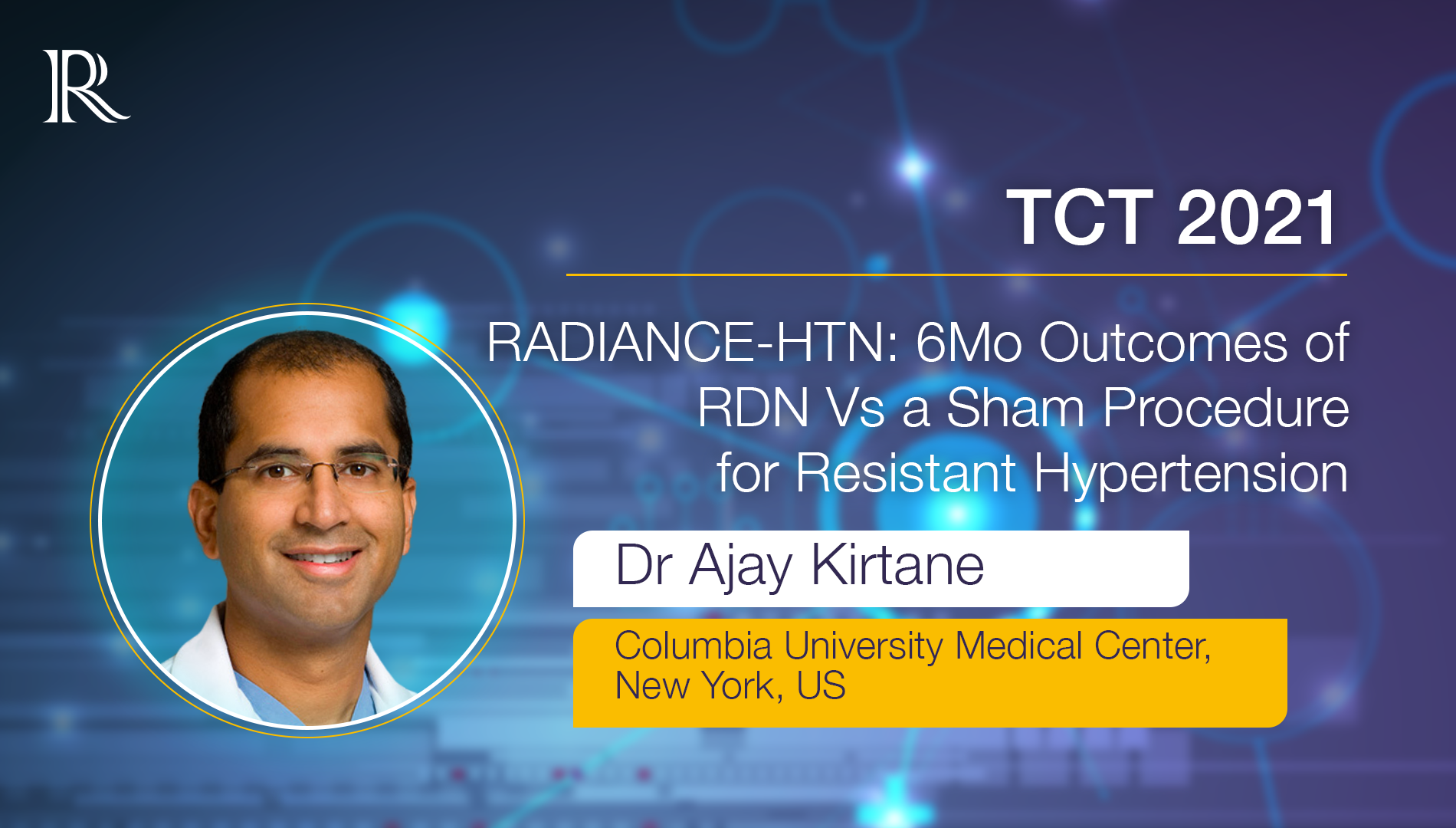 Up Next
Up Next -
 4m 28sPart 2 | Session 10 BIO-RESORT: 5Y Outcomes
4m 28sPart 2 | Session 10 BIO-RESORT: 5Y Outcomes -
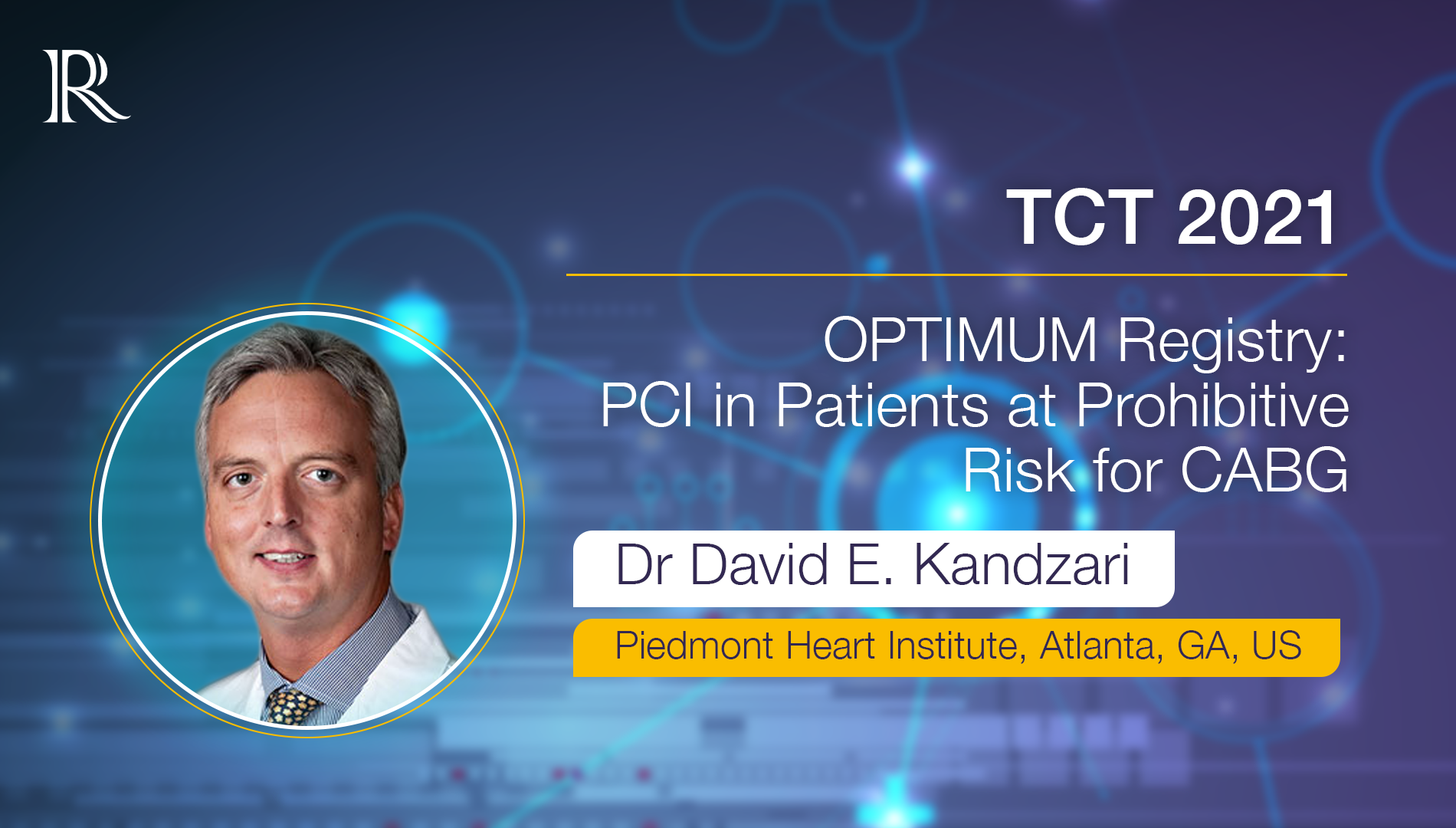 10m 19sPart 2 | Session 11 OPTIMUM Registry: PCI in Patients at Prohibitive Risk for CABG
10m 19sPart 2 | Session 11 OPTIMUM Registry: PCI in Patients at Prohibitive Risk for CABG
-
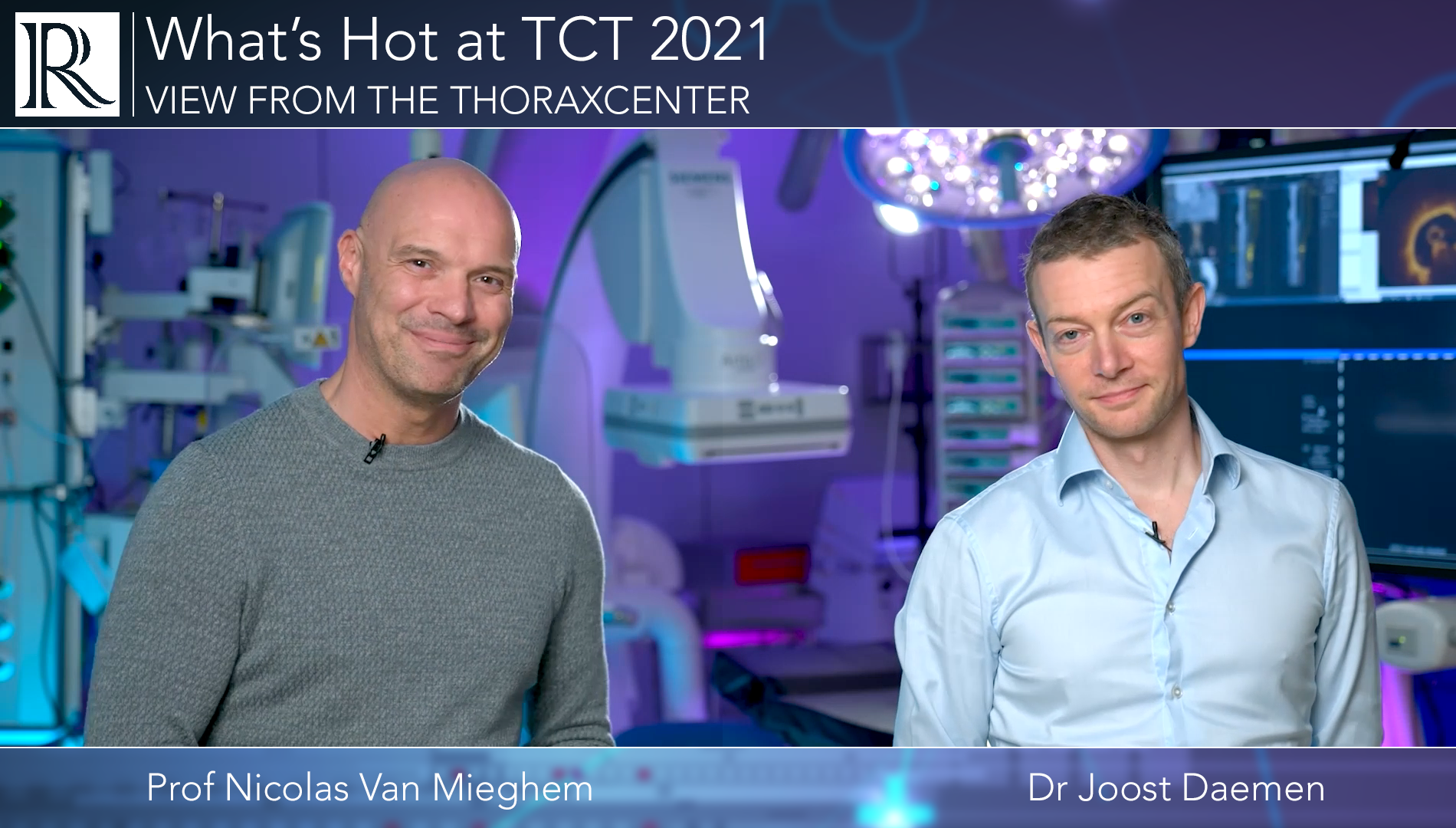 22m 43sPart 1 | Session 1 What's Hot at TCT 2021: View from the Thoraxcenter Nicolas M Van Mieghem, Joost Daemen
22m 43sPart 1 | Session 1 What's Hot at TCT 2021: View from the Thoraxcenter Nicolas M Van Mieghem, Joost Daemen
-
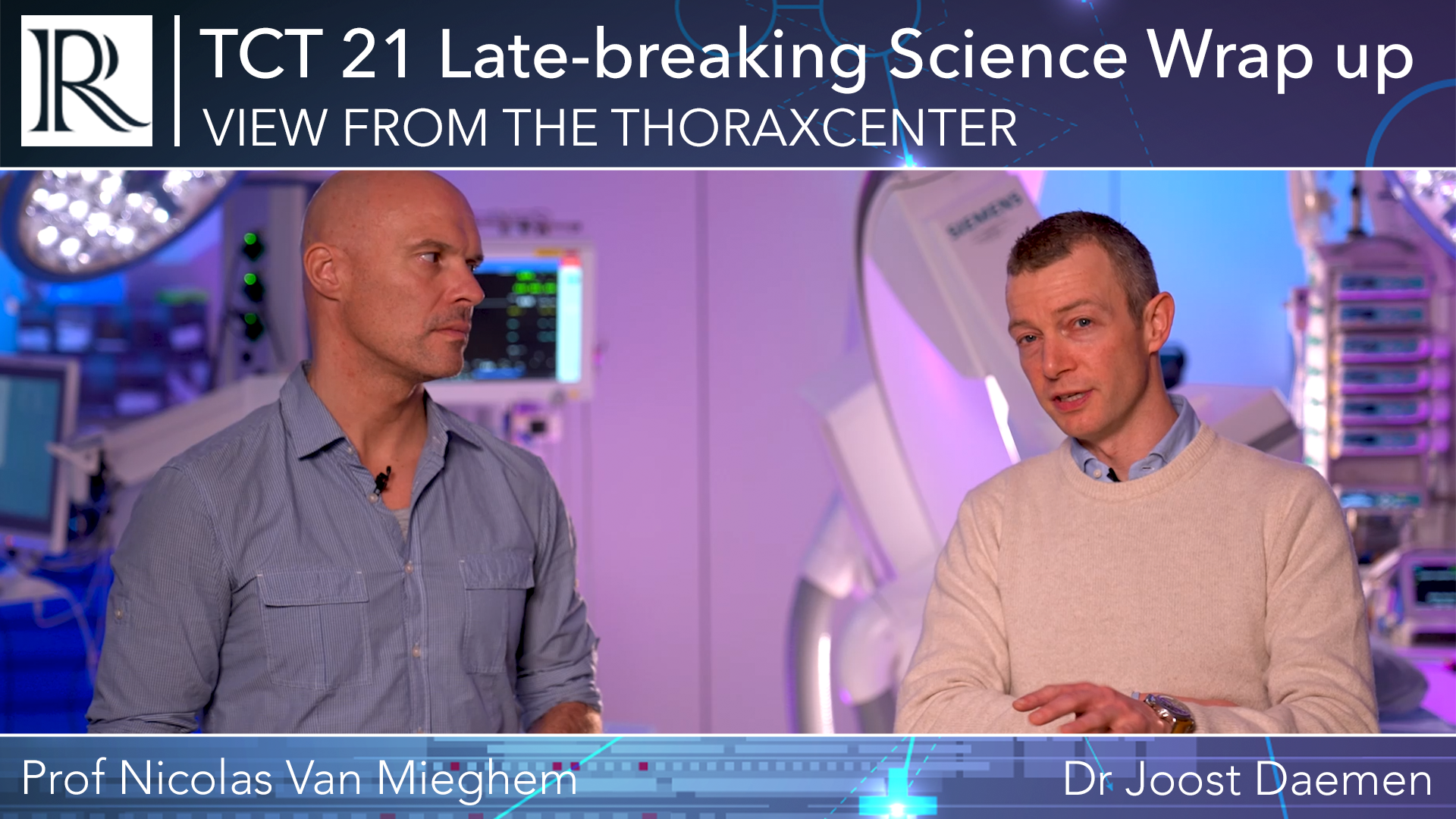 22m 33sPart 1 | Session 2 View from the Thoraxcenter: TCT 21 Late-breaking Science Wrap Up Nicolas M Van Mieghem, Joost Daemen
22m 33sPart 1 | Session 2 View from the Thoraxcenter: TCT 21 Late-breaking Science Wrap Up Nicolas M Van Mieghem, Joost Daemen
-
 10m 32sPart 2 | Session 1 FAME3: PCI Guided by FFR Didn't Meet Noninferiority for 1Y Outcomes Compared to CABG William Fearon
10m 32sPart 2 | Session 1 FAME3: PCI Guided by FFR Didn't Meet Noninferiority for 1Y Outcomes Compared to CABG William Fearon
-
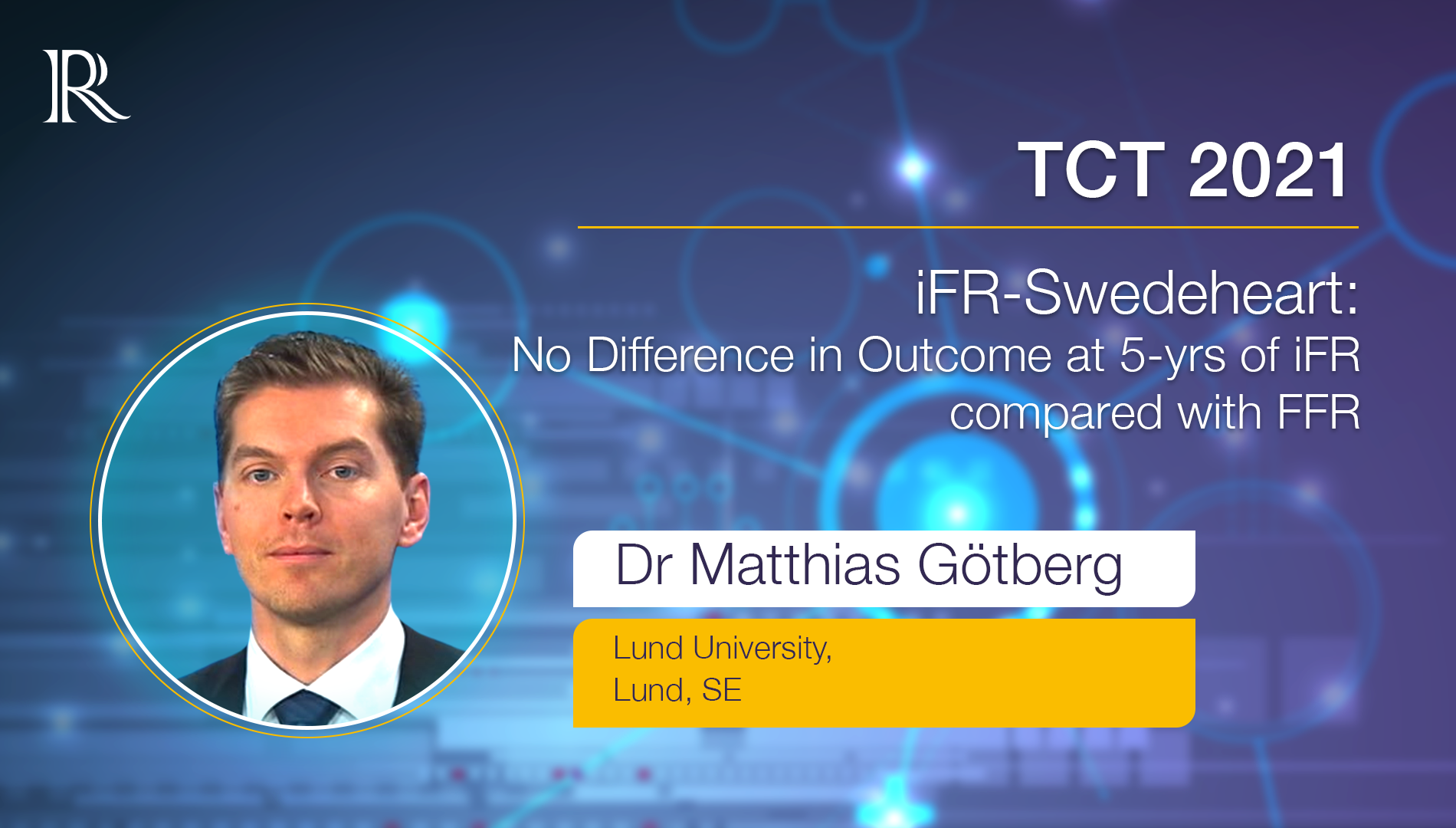 4m 40sPart 2 | Session 2 iFR-SWEDEHEART: No Difference in Outcome at 5-yrs of iFR vs FFR Matthias Gotberg
4m 40sPart 2 | Session 2 iFR-SWEDEHEART: No Difference in Outcome at 5-yrs of iFR vs FFR Matthias Gotberg
-
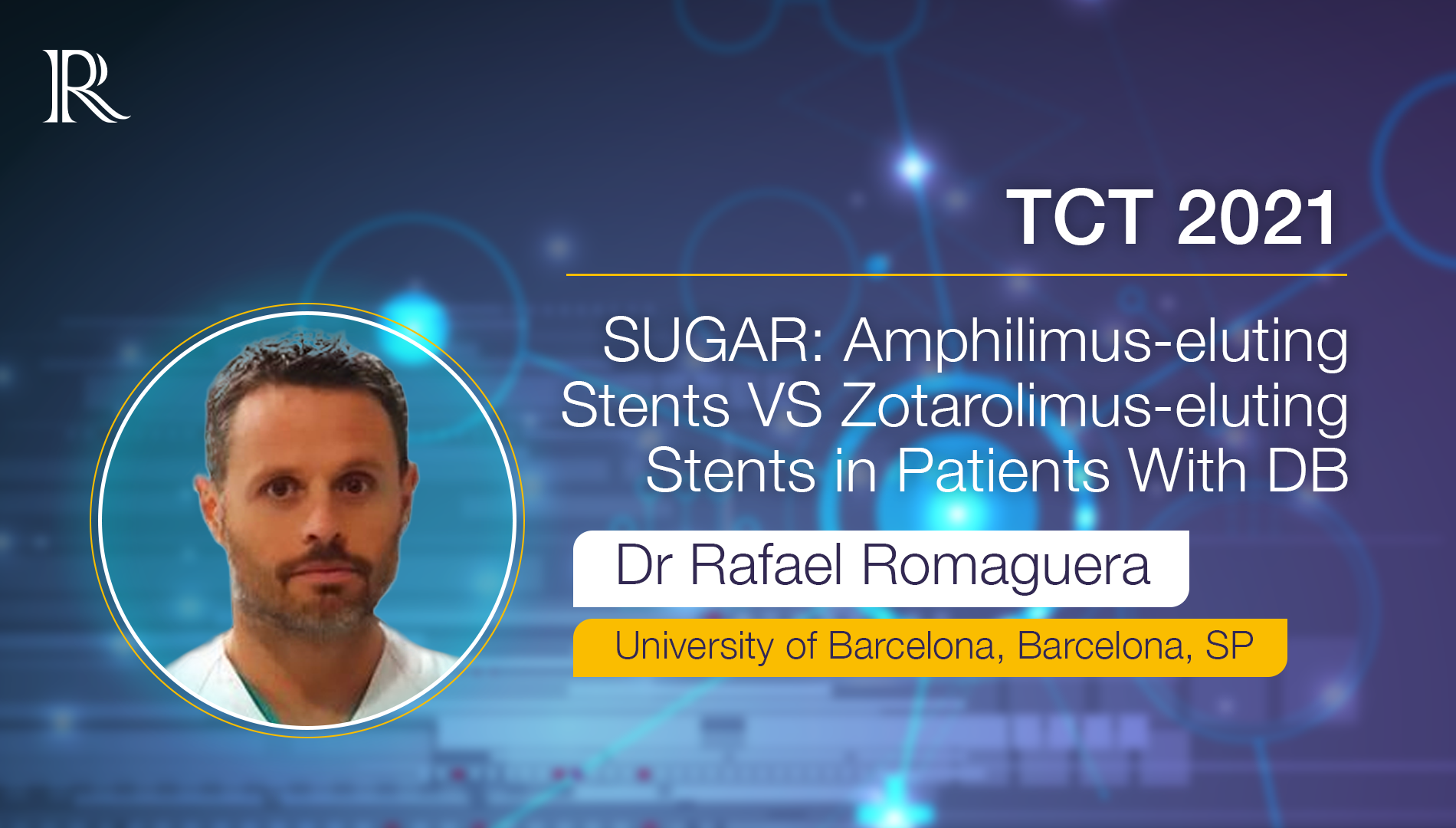 8m 19sPart 2 | Session 3 SUGAR: Amphilimus-eluting Stents VS Zotarolimus-eluting Stents in Patients With DB Rafael Romaguera
8m 19sPart 2 | Session 3 SUGAR: Amphilimus-eluting Stents VS Zotarolimus-eluting Stents in Patients With DB Rafael Romaguera
-
 7m 32sPart 2 | Session 4 CHOICE-CLOSURE: Plug-based Vs Suture-based Large-bore Vascular Closure Mohamed Abdel-Wahab
7m 32sPart 2 | Session 4 CHOICE-CLOSURE: Plug-based Vs Suture-based Large-bore Vascular Closure Mohamed Abdel-Wahab
-
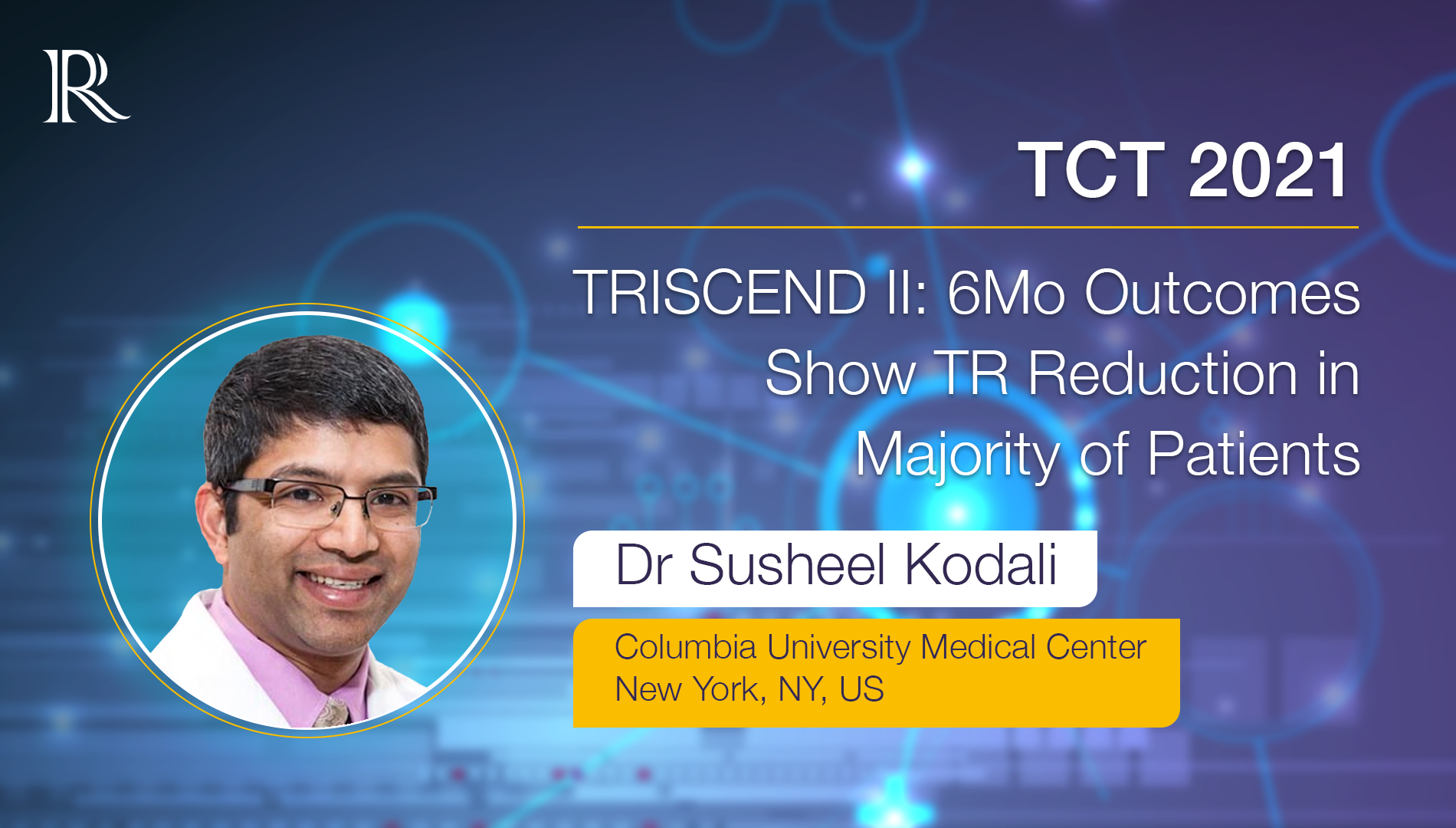 7m 27sPart 2 | Session 5 TRISCEND II: 6Mo Outcomes Show TR Reduction in Majority of Patients Susheel Kodali
7m 27sPart 2 | Session 5 TRISCEND II: 6Mo Outcomes Show TR Reduction in Majority of Patients Susheel Kodali
-
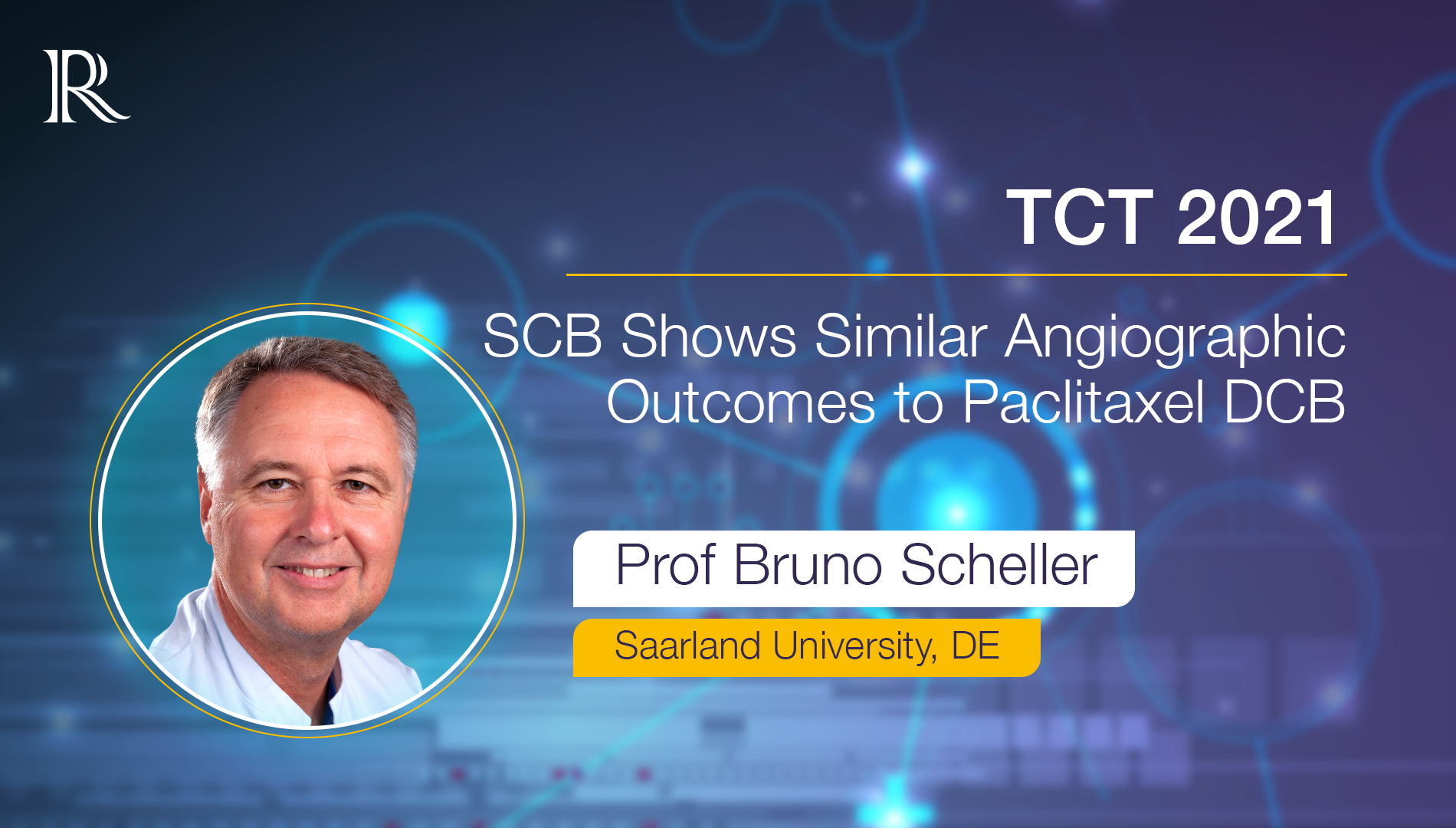 8m 8sPart 2 | Session 6 SCB Shows Similar Angiographic Outcomes to Paclitaxel DCB Bruno Scheller
8m 8sPart 2 | Session 6 SCB Shows Similar Angiographic Outcomes to Paclitaxel DCB Bruno Scheller
-
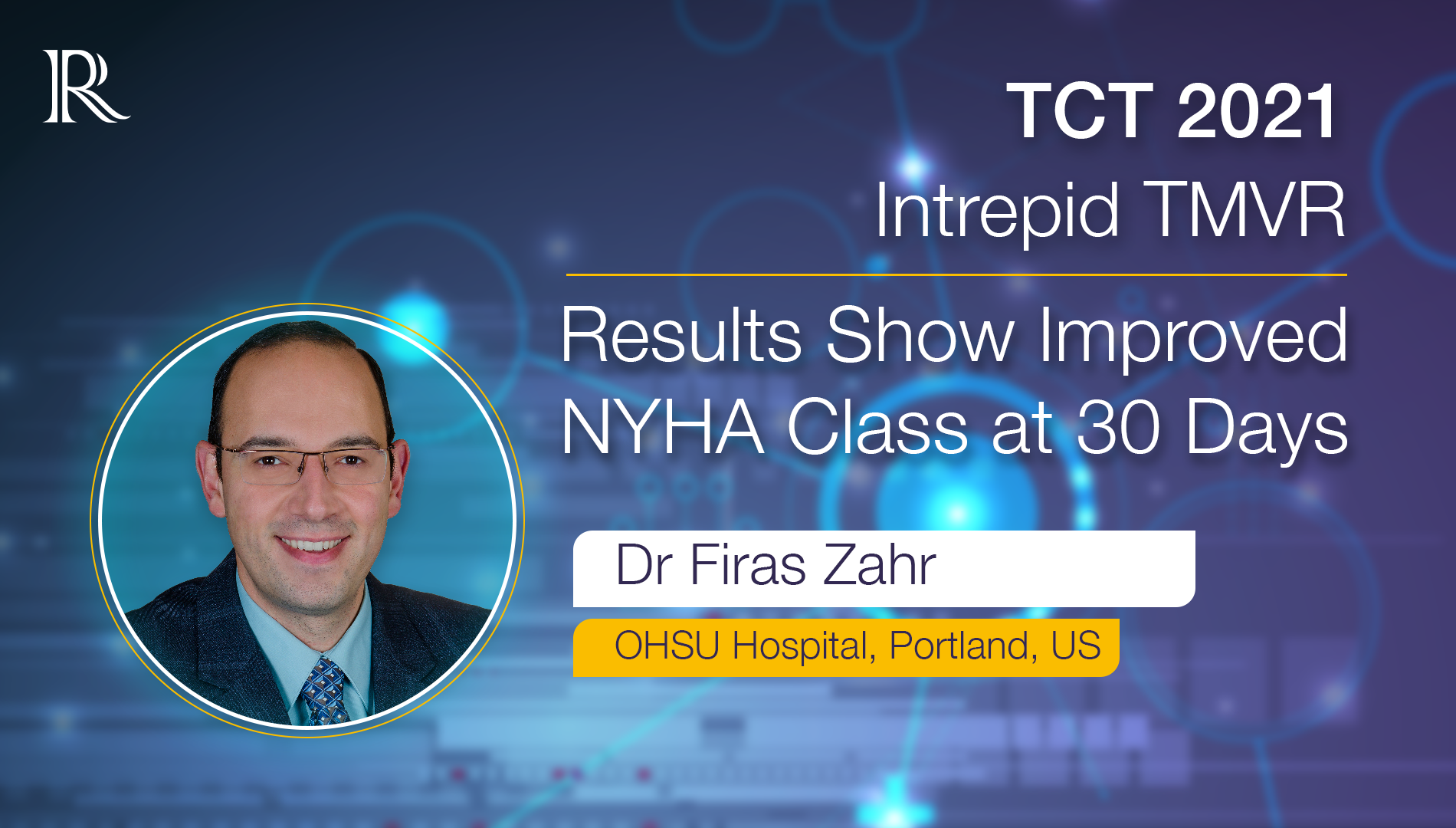 3m 37sPart 2 | Session 7 Intrepid TMVR: Results Show Improved NYHA Class at 30 Days
3m 37sPart 2 | Session 7 Intrepid TMVR: Results Show Improved NYHA Class at 30 Days
-
 6m 43sPart 2 | Session 8 12Mo Results Comparing PCB With SCB Show No Difference in Clinical Incidences Wan Azman Wan Ahmad
6m 43sPart 2 | Session 8 12Mo Results Comparing PCB With SCB Show No Difference in Clinical Incidences Wan Azman Wan Ahmad
Overview
Our regular review series View from the Thoraxcenter hosted by Prof Nicolas Van Mieghem and Dr Joost Daemen (Thoraxcentre, Erasmus MC, Rotterdam, NL) provide a concise and insightful preview of the late-breaking science presented at TCT 2021.
Short, accessible Expert Interviews will be available conducted with select faculty focusing on the results, applicability, and impact on future research.
More from this programme
Part 1
View from the Thoraxcenter: Preview of the Late-Breaking Trials
Part 2
Expert Interviews
Faculty Biographies

Ajay J Kirtane
Professor of Clinical Medicine
Ajay J Kirtane, is Professor of Medicine at the Columbia University Medical Center (CUMC) and Director of the Cardiac Catheterization Laboratories at NewYork-Presbyterian (NYP) Hospital / CUMC. Dr. Kirtane is an internationally-renowned leader in Interventional Cardiology, specializing in the care of patients with complex coronary and peripheral vascular disease.
In addition to his clinical commitments, Ajay has a strong interest in clinical education and research, serving as Chief Academic Officer of Columbia Interventional Cardiovascular Care. He is a director of the Cardiovascular Research Foundation’s Transcatheter Cardiovascular Therapeutics conference, has served as a director of several international, national, and regional educational conferences, and has participated on the program committees for the scientific sessions of both the American College of Cardiology and American Heart Association. Ajay’s research…
Transcript
RADIANCE-HTN in the Context of Other Studies
RADIANCE-HTN was two parts of an overall programme of studies. The first was a RADIANCE-HTN solo study, which took patients off medicines and then tried to compare renal denervation versus the Sham procedure. RADIANCE-HTN TRIO, which is what I presented was an on-med study or taking patients on one single combination pill of three medications, and then randomising patients to renal denervation versus a sham control.
Design and Eligibility Criteria
In order to be eligible for this study, patients had to have elevated blood pressures despite multiple medications. In average, in this study, patients had blood pressures of 160 mmHg despite being on four medications at baseline. They then were taken off their home regimen, put on a combination pill, consisting of a Calcium channel blocker, thiazide diuretic and an angiotensin receptor blocker and if they still had elevated blood pressures, they then underwent anatomic screening and then randomization to renal denervation versus a Sham control. They then were followed for two months at which the primary endpoint was ascertained, which was a reduction in blood pressure: renal denervation versus Sham. We published that data earlier this year in the Lancet, demonstrating that Renal Denervation, decreased blood pressure to a greater extent than the Sham control and the data I presented at TCT, looked at these patients from two to six months, as medications were added back, to try to see if blood pressure could be further lowered and we could achieve better rates of control.
Key Findings
What we found is that there were less medications that needed to be added back in the renal denervation group compared to the Sham control. Why is that? Well, I think that if you think about the study design, if renal denervation lowers blood pressure relative to Sham, and in order to achieve further control, you would actually have to add less medicines to the renal denervation arm compared to the Sham arm and that's exactly what we showed. Now, one of the things you'd be wondering about those, if you add more medicines, to the Sham arm, would blood pressure be lower in that arm than the denervation arm? And in fact, what we found is that ambulatory blood pressure was the same, despite less medicines being added in the renal denervation arm, and home blood pressure, which is actually what the physicians taking care of these patients were using in order to titrate their medicines, was lower than the denervation arm compared to Sham, despite the fact that more medicines were added back in the Sham arm. So, it does suggest there's a treatment effect that's persistent with renal denervation. The one other point I'd like to add is that in terms of the specific medications that were added, remember these patients were already on three medications, so, this was a fourth line agent being added at step one of the programme. And that medicine was spironolactone. What we showed is that spironolactone was added back to a greater extent and at higher doses in the Sham arm, compared to the denervation arm, suggesting again, that there was a persistent benefit in terms of blood pressure lowering with renal denervation compared with Sham.
Which Patients Would Benefit from RDN?
The Holy Grail question here is, who should we do renal denervation at? And this is an important question because it's an invasive procedure. I think the key point here is that we know medications work and we know lifestyle modification can work, but it doesn't always work. And in many patients, they can't adhere to these regiments, or they perhaps don't want to. And I think it's for those patients that renal denervation offers promise. We've shown through multiple studies that renal denervation can work in more controlled versions of hypertension. Also less controlled, such as resistant hypertension as shown in this study. And so the real question is, is if patients have had a legitimate effort to control their blood pressure with lifestyles and traditional medications, the way we'd like them to be citrated, and they still have elevated blood pressure, then they would be great candidates for renal denervation in my opinion. If, denervation can be proven to be safe over the long period.
Take home Messages
My take home messages would be number one: we know renal denervation can lower blood pressure compared to a Sham procedure. We know that it's part of an armamentarium that includes lifestyle and medications, and it can be additive in this regard. And finally, that at least out to six months from these data, the effect does appear to be durable. So, with those three things in mind, there does appear to be promise for this technology going forward.
Next Steps
The next steps here really relate to longer-term follow-up of these randomised trials, additionally, larger series of patients to be able to determine that these benefits can be durable over time and can be safe over time. Once we have those established. I do think that we're going to start seeing renal denervation being used in clinical practice.





